Corentin Cadiou
Framing the Big Picture of Galaxy Star Formation Quenching with JWST & Euclid 2024
Postdoc @ Lund University
Soon “Chargé de recherche” CNRS @ IAP, Paris


Mini-quenching of high-\(z\) \(\gtrsim 10^7\,\mathrm{M}_\odot\) halos & ISM
Side-B: peeking into emission lines
Insights from the MEGATRON* simulation — with H. Katz & M. Rey


*MEGATRON: TransforMing Galaxy Formation by REsolvinG the Non-Equilibrium Chemistry And TheRmOdyNamics of the ISM and CGM
Detailed modelling of the ISM and emission lines to constrain (the interplay between) feedback and star formation

Spectra contain a huge amount of information
SFR
SFH
Katz+23
Spectrum of a \(z=8.5\) galaxy
U
Z
Katz+23
*geometry, equilibrium, ISM properties near stars, element abundances


3. Mock spectra &
images

2. Post-processing*
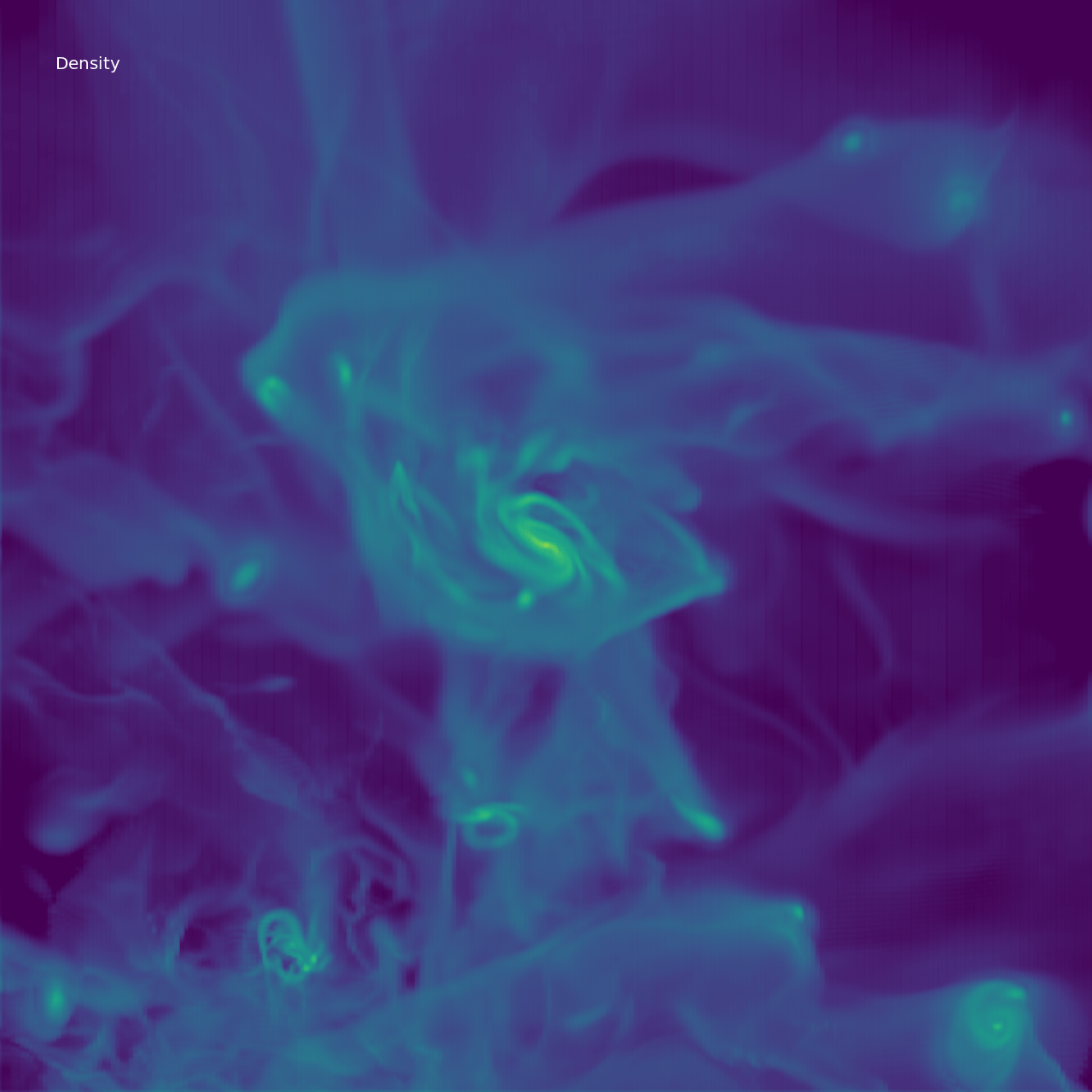
1. Simulation

From intrinsic…
… to observed





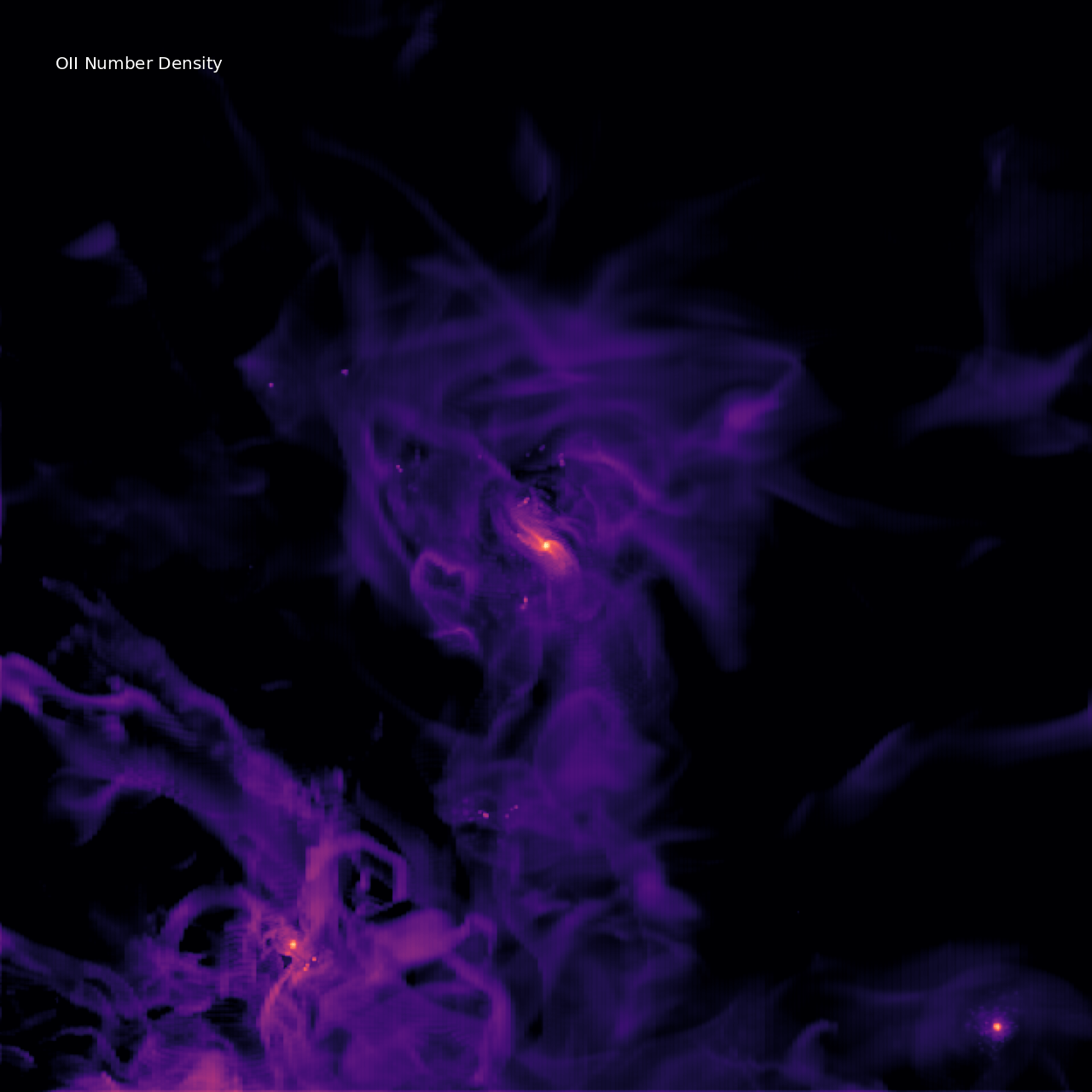



\(\text{O\small{II}}\)
\(\text{O\small{I}}\)
\(\text{N\small{I}}\)
\(\text{Mg\small{II}}\)
\(\text{Ne\small{II}}\)
\(\text{CO}\)
\(\rho\)
\(v_r\)
\(\text{O\small{III}}\)
Megatron model [i]
- Based on RAMSES-RT (Rosdahl+13)
- Out-of-equilibrium chemistry (Katz 23)
Primordial species: \(\text{H~{\small I}-{\small II}}\), \(\text{He~{\small I}-{\small III}}\), \(e^{-}\)
Metal ions: \(\text{C~{\small I}-{\small VI}}\), \(\text{N~{\small I}-{\small VII}}\), \(\text{O~{\small I}-{\small VIII}}\), \(\text{Ne~{\small I}-{\small X}}\), \(\text{Mg~{\small I}-{\small X}}\), \(\text{Si~{\small I}-{\small XI}}\), \(\text{S~{\small I}-{\small XI}}\) & \(\text{Fe~{\small I}-{\small XI}} \)
Molecules: \(\text{H}_2\) & \(\text{CO}\)
- Dust model (Rémy-Ruyer+14)
Assuming dust-to-gass ratio
- Heating & Cooling out of equilibrium
photoheating, photoelectric heating, excitation/dissociation heating, primordial, dust recombination, dust-gas collisions, metal lines- \(\text{C~{\small I}}\), \(\text{C~{\small II}}\), \(\text{N~{\small II}}\), \(\text{O~{\small I}}\), \(\text{O~{\small III}}\), \(\text{Ne~{\small II}}\), \(\text{Si~{\small I}}\), \(\text{Si~{\small II}}\), \(\text{S~{\small I}}\), \(\text{Fe~{\small I}}\), \(\text{Fe~{\small II}}\) @ \(T<10^4\,\mathrm{K}\)
- CLOUDY tables @ \(T>10^4\,\mathrm{K}\)

Megatron model [ii]
- Turbulence-based star formation (Padoan & Nordlund 11, Agertz+21)
\(\dot{\rho_\star} = \varepsilon_\star\rho/t_\mathrm{ff}\)- if \(Z<10^{-6}Z_\odot\) ⇒ Pop. III
- if \(Z\geq10^{-6}Z_\odot\) ⇒ Pop. I & II, Kroupa
- \(M_\star = 500\,\mathrm{M}_\odot\)
\(M_{\star,\rm III} \sim 100\,\mathrm{M}_\odot\)
- Feedback (Agertz+21; Rey+23)
core-collapse SN, type Ia, winds + HN (Nomoto+06).
- Yields (Limongi & Chieffi 18)
AGB winds (Ritter+18)
Simulated objects
- MW analogue @ \(z=0\)
- Genetically engineered to form earlier
ICs generated withgenetIC
- 2 main runs
- constant physical \(\Delta x_\mathrm{min} \approx 20-40\,\mathrm{pc}\)
-
constant comoving \(\Delta x_\mathrm{min}(z=2) = 20\,\mathrm{pc}\)
\(\Delta x_\mathrm{min}(z=5)=10\,\mathrm{pc}\)
\(\Delta x_\mathrm{min}(z=14)=4\,\mathrm{pc}\)

fiducial:
few JWST targets


early-forming:
many targets
\(z>8\)
Side quest:
if you have an unusual formation history to test, we can simulate it!

(side quest): causal origin of (morphological) quenching
\(M_\star = 10^{11}\,\mathrm{M_\odot}\) @ \(z=2\) galaxy
different ang. mom history (ask me for details!)
Low tides
High tides
\(\mathcal{B}\searrow\)
\(R_\mathrm{eff} \nearrow \)
\(v/\sigma\nearrow\)
See Cadiou+21a, and Cadiou+21b; Storck, CC+24



\(2\times\) too massive at high \(z\)
⇒ we need more regulation
Vintergatan: Agertz+21


Mass evolution: Megatron vs. Vintergatan
Mine
My current boss'

1. Single-halo setup: massive dwarf
\(M_\mathrm{DM} \approx 10^{8}\,\mathrm{M_\odot}\)
to \(z=6\)






Merger
1. Single-halo setup: massive dwarf
\(M_\mathrm{DM} \approx 10^{9}\,\mathrm{M_\odot}\) at \(z=6\)



Strong feedback
⇒ removes cold gas
⇒ \(\sim100\,\mathrm{Myr}\) mini-quenching
Increasing feedback strength

\(T<500\,\mathrm{K}\)
\(2\times 10^{51}\,\mathrm{erg/SN}\)
\(4\times 10^{51}\,\mathrm{erg/SN}\)
\(5\times 10^{51}\,\mathrm{erg/SN}\)
1. Single-halo setup: varying \(E_\mathrm{SN}\)



With hypernovae
With Ly\(\alpha\) rad. pressure
1. Single-halo setup: varying feedback channels
⇒ Stronger feedback heats up/expells cold gas \(T<500\,\mathrm{K}\)

1. Single-halo setup: signature of FB?
High \(T_\mathrm{e^-}\)
Lower \(T_\mathrm{e^-}\)
⇒ Exciting opportunities to relate
ISM to feedback with NIRSPEC!

1. Single-halo setup: signature of FB?
⇒ Exciting opportunities to relate
ISM to feedback with NIRSPEC!

Varying feedback
Varying star formation recipe
See Nicolas' talk yesterday
2. Quenching of more massive halos?
Focus : halos \(M_\mathrm{DM} = 10^8-10^{10}\,\mathrm{M_\odot}\)
at \(z=10\)



⇒ Mini-quenching
\(M_\star \lesssim 10^8\,\mathrm{M_\odot}\) for \(\sim 50-100\,\mathrm{Myr}\)
iff feedback is strong enough
Increasing mass
Mini-quenching? Napping?
3. Even more massive?
Focus : halos \(M_\mathrm{DM} = 10^{10}-10^{11}\,\mathrm{M_\odot}\) at \(z=6\)




⇒ No SNe quenching in this mass range?
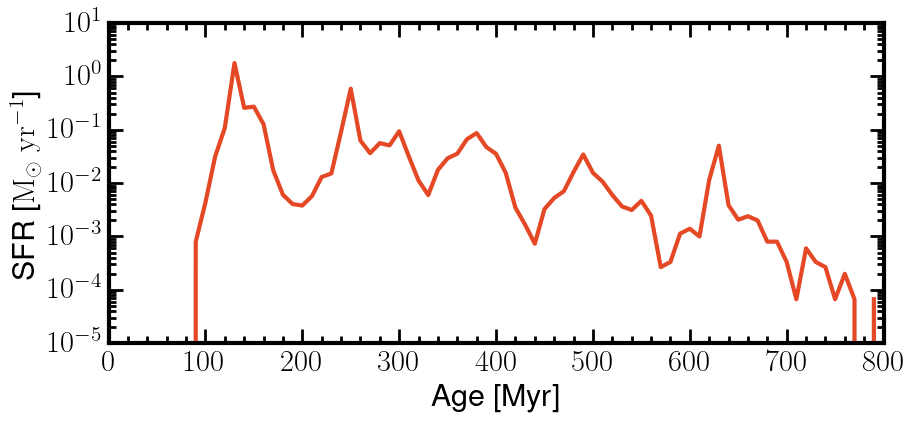

SNe quenching - SPICE simulation (Bhagwat+24)
\(M_\mathrm{DM}=3\times 10^{11}\,\mathrm{M}_\odot\) at \(z=5\)
\(M_\star= 10^{8.5}\,\mathrm{M}_\odot\) at \(z=5\)
Plenty others in bursty/HN channels
3. Massive end : peeking into other sims


AGN quenching - FLARES simulation (Lovell+20)
AGN quenching - THESAN simulation (Kannan+22) (no ISM)
Conclusions
- Low-mass quenching within our uncertainties
Strong SNe (Hypernovæ, top-heavy IMF, Ly\(\alpha\)) ⇒ mini-quenching
- Maybe high-mass quenching w/out AGN is possible
- Different feedback (quenching?) channels ⇒ different line ratios
ISM thermodynamics matter, direct obs.
Open questions
- Observational constraints on FB processes to understand quenching?
- “Easy” to generate mocks → how to make the simulations most useful? How to pin down quenching?
- Can we learn anything from combined IFU data?


Conclusions
- Low-mass quenching within our uncertainties
Strong SNe (Hypernovæ, top-heavy IMF, Ly\(\alpha\)) ⇒ mini-quenching
- Maybe high-mass quenching w/out AGN is possible
- Different feedback (quenching?) channels ⇒ different line ratios
ISM thermodynamics matter, direct obs.
Open questions
- Observational constraints on FB processes to understand quenching?
- “Easy” to generate mocks → how to make the simulations most useful? How to pin down quenching?
- Can we learn anything from combined IFU data?


Katz 22

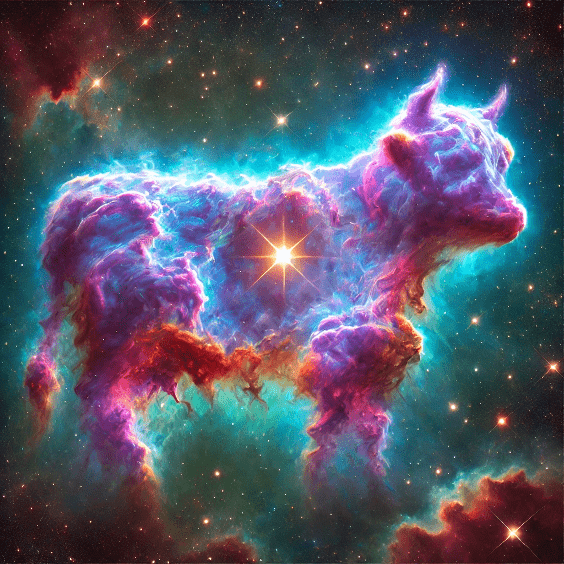
Today's talk, in a nutshell
(My) route to high-\(z\) kinematics
- Effect of cosmo. env. (Musso+19, Kraljic+20,21, Cadiou+21, Storck+24)
- Cosmology-galaxy connection (Cadiou+21)
- Cosmological accretion (Cadiou+19, Kocjan+24)
- But what are we actually observing? This talk




Low grav. tides
Large grav. tides
- cosmological environment \(\sim 50-100\,\mathrm{Mpc}\)
- resolve Strömgren spheres \(\sim 10\,\mathrm{pc}\)
- radiative-transfer
- proper multi-phase ISM \(T \lesssim 10^4\,\mathrm{K}\)
- Track ion abundances out-of-equilibrium
Wishlist for proper modelling of emission lines + kinematics
Background: Vintage Gordon (follow-up of Vintergatan) simulation
(PI: Cadiou)



\(t_\mathrm{chem} \propto 1/n^2\)
\(t_\mathrm{dyn} \propto 1/\sqrt{n}\)
\(t_\mathrm{burst} \sim 10-100\,\mathrm{Myr}\)
How we typically model emission lines

Lots of assumptions
(equilibrium, geometry, element abundances, …)
See Aniket's talk (I guess?)
\(\rho, T, Z,v\)
sometimes \(n_\mathrm{H}, n_{\mathrm{HI}}, n_\mathrm{HeI}, n_\mathrm{HeII},n_\mathrm{HeIII},\)
Processes that control ion and molecular properties:
- Collisional, photo, cosmic-ray ionization
- Radiative, dielectronic, dust recombination
- Charge exchange

RAMSES-RTZ + PRISM: Non-equilibrium chemistry coupled to on-the-fly radiative transfer
Processes that control gas temperature:
- Cosmic-ray, photo, photo-electric, H2, dust heating
- Primordial, \(\mathrm{H}_2\), CO, metal, dust* recombination, dust-gas collisional cooling
- Adiabatic (expansion), shocks (e.g. SN, turbulence), gravitational, etc.
Image: Cadiou/Katz/Rey+in prep


- Early forming MW mass galaxy
- \(1.6\times 10^{4}\mathrm{M}_\odot\) DM, \(500\, \mathrm{M}_\odot\) Pop. II stars, individual Pop III stars, \(1\, \mathrm{pc}\) resolution at first star formation
- IMF sampled chemical enrichment from individual stars for all relevant elements
- SN (CC, Ia, HN, PISN), Winds → follows Vintergatan (validated for MW galaxies at z = 0)
- 82 species chemistry coupled to 8 bin RT
- PRISM ISM model
- Enhanced resolution in the CGM
- Calibration sims with IMF variations and physical model variations

Introducing MEGATRON

Halo-mass—stellar-mass relation
VG: Vintergatan (Agertz+21)
⇒ Well-regulated by \(z=0\)
High-resolution early \(<1\mathrm{pc}\)
Constant resolution \(\sim 20\,\mathrm{pc}\)

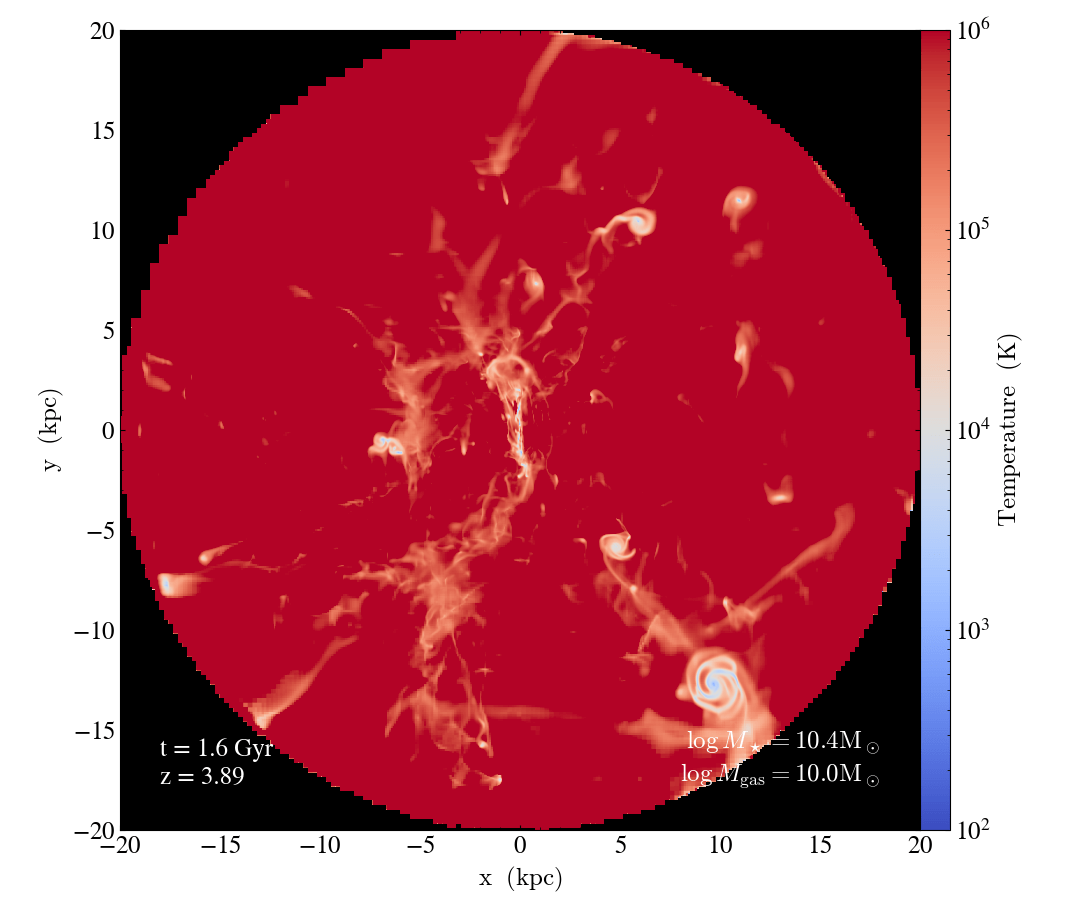

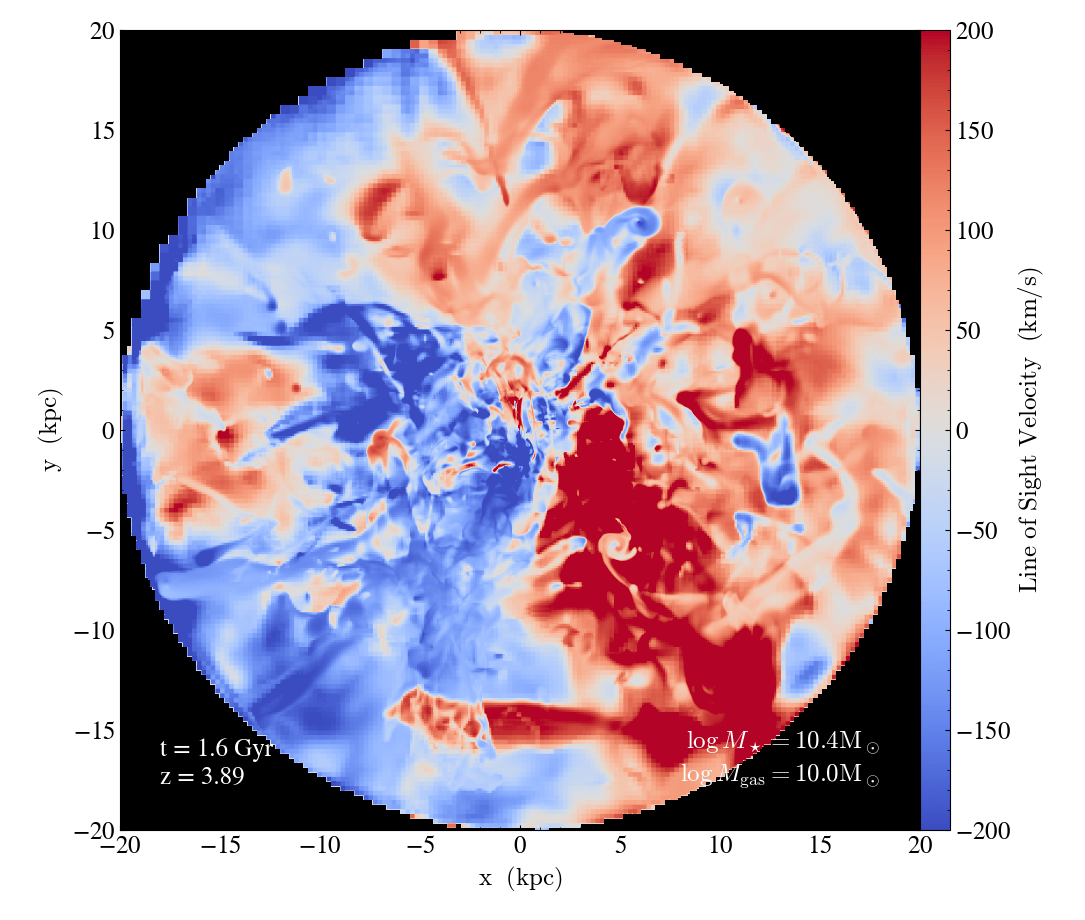


Most massive galaxy, edge-on
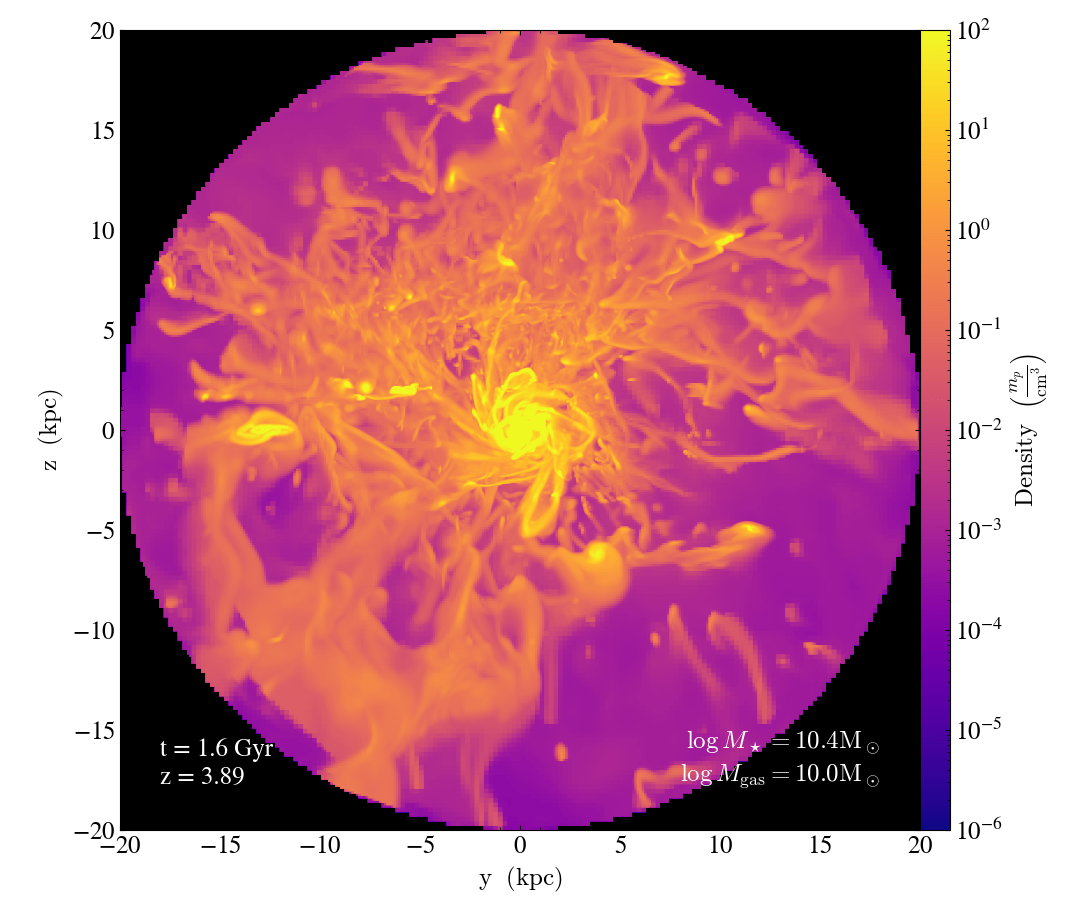
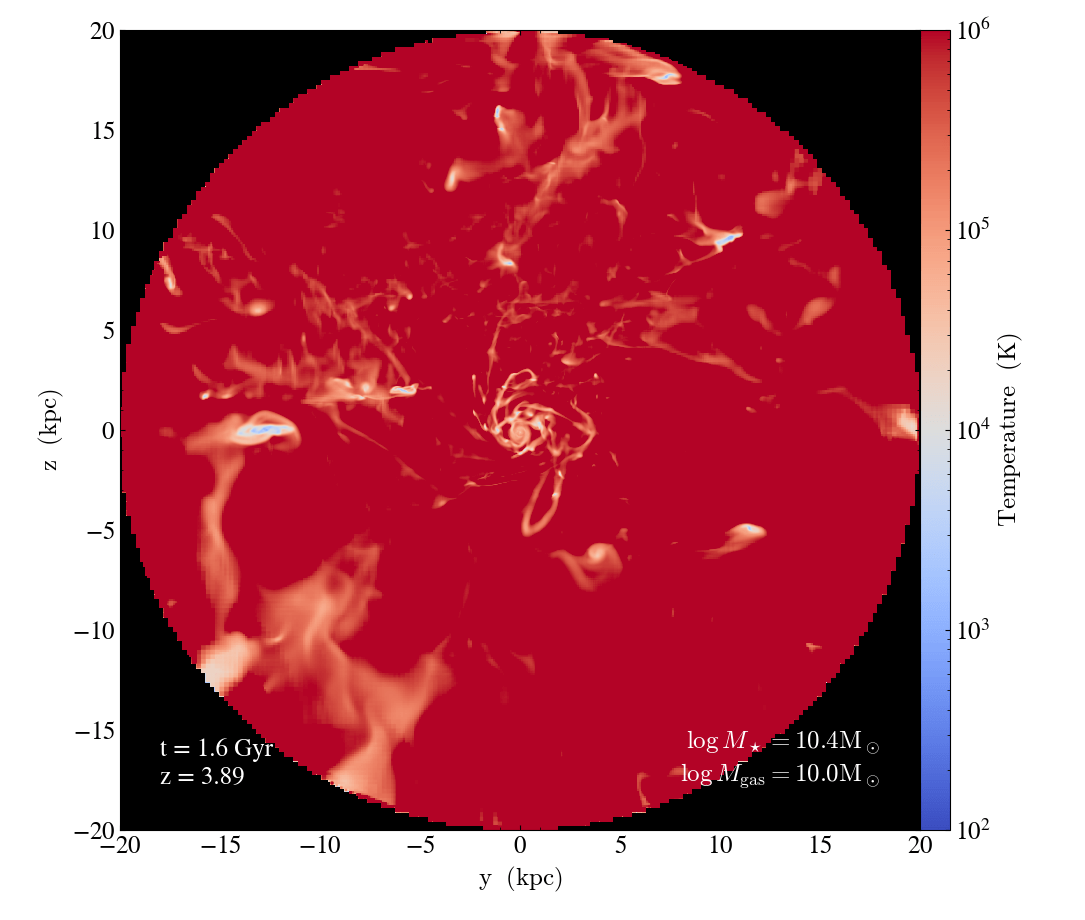


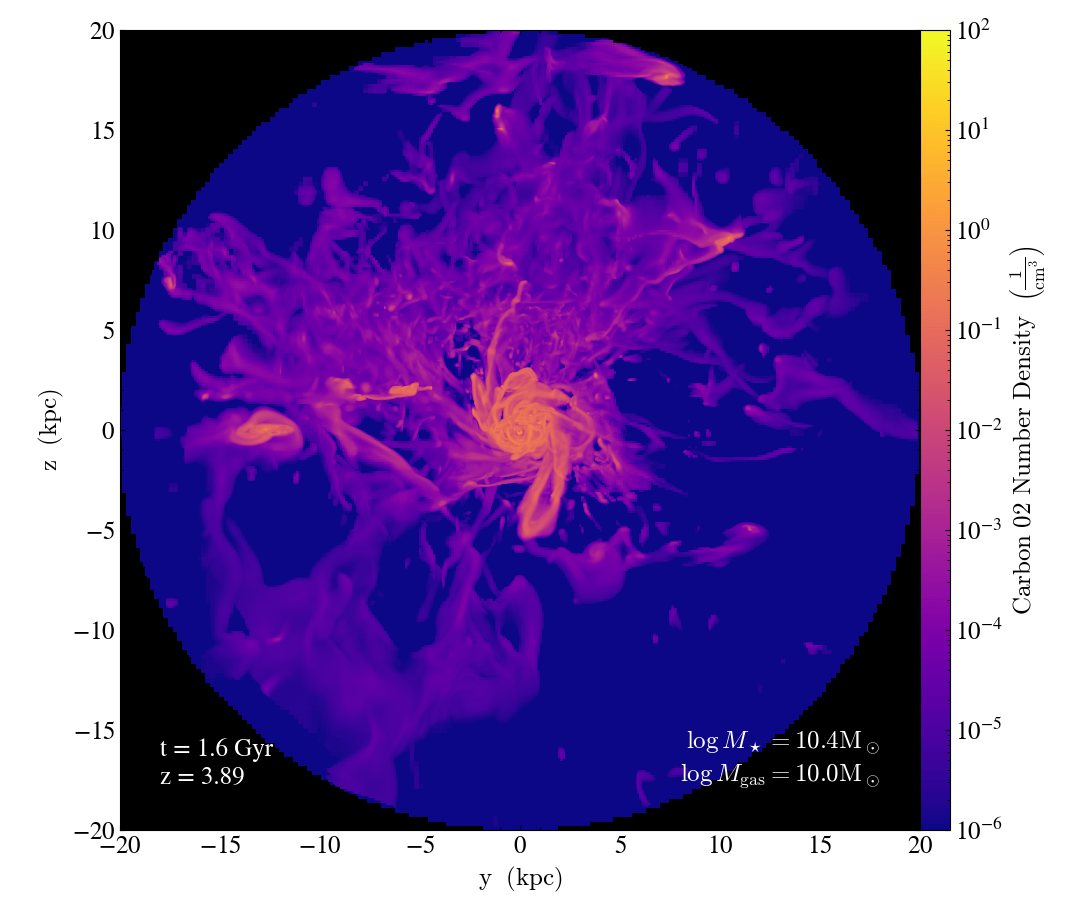

Most massive galaxy, face-on
Difference \([\mathrm{C{\small{II}}}]\)-weighted vs. \(n_\mathrm{H}\)-weighted
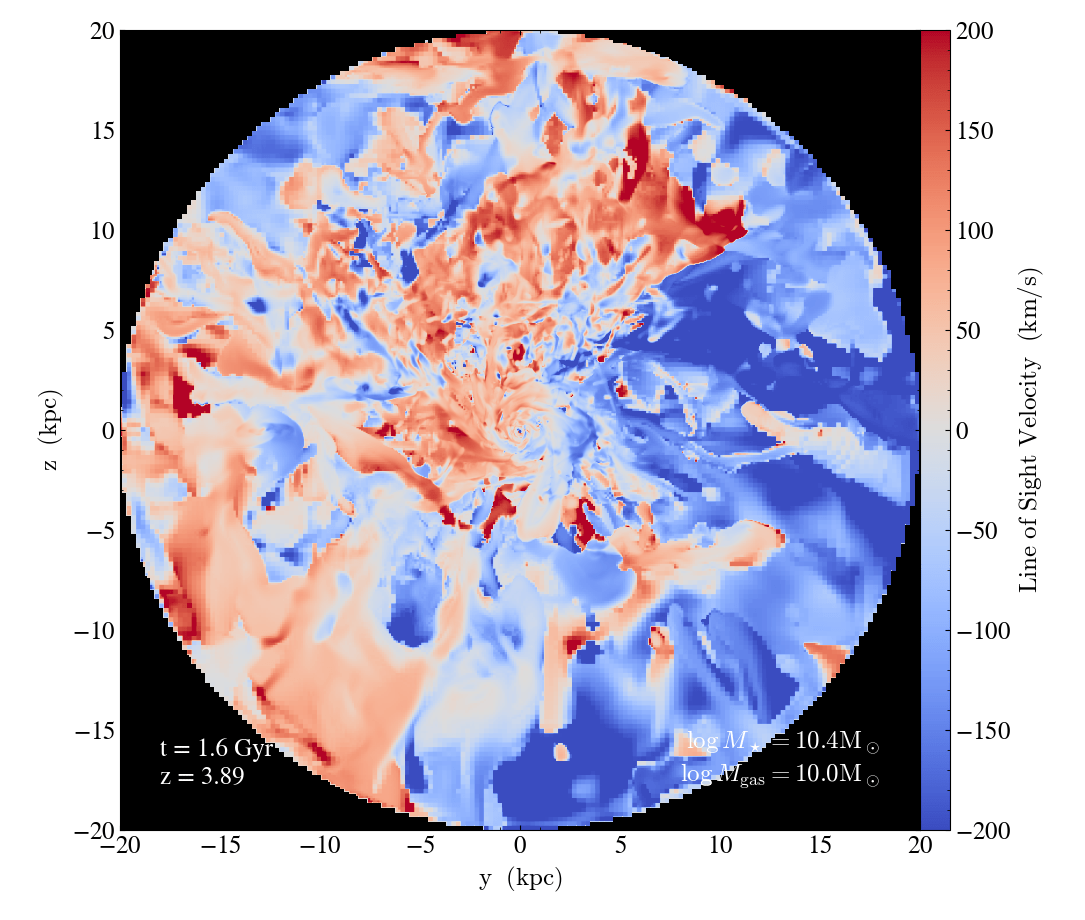
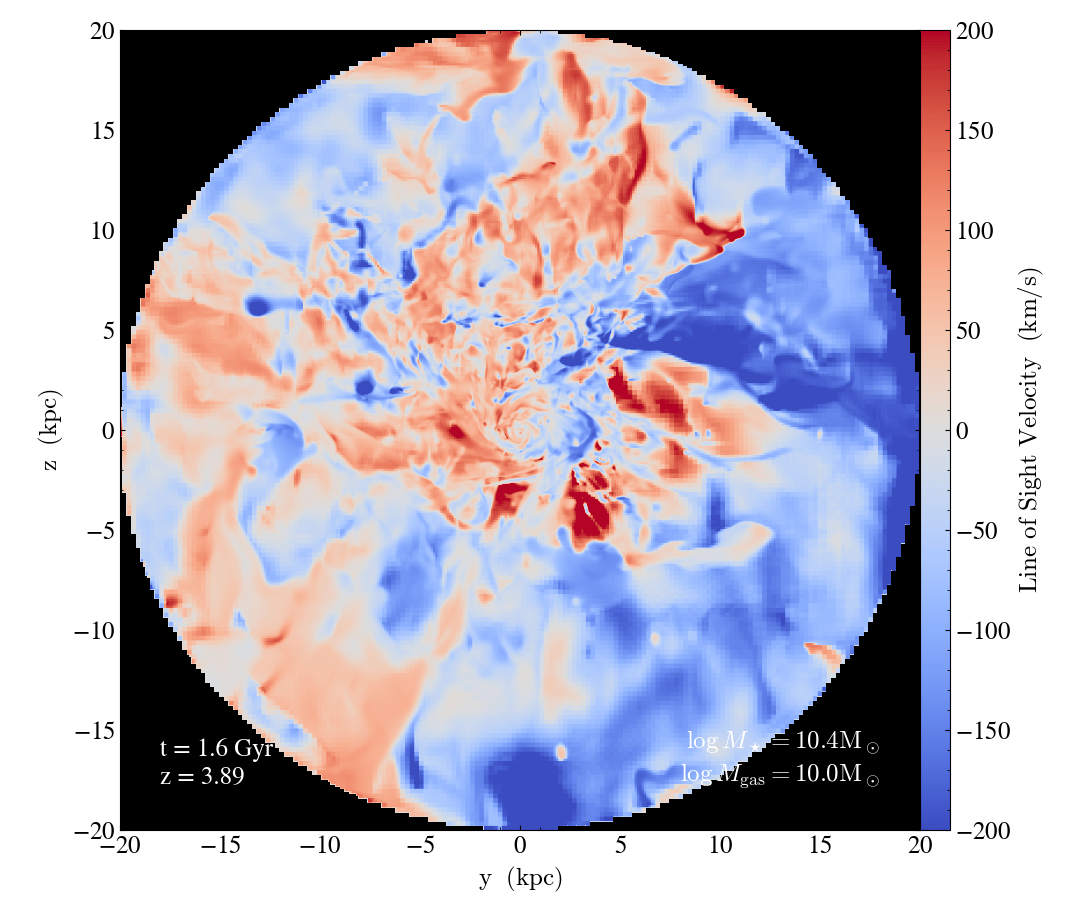
results
Stacked profiles
36 galaxies @ \(z=10\)
\(8.3\leq\log(M_\star/\mathrm{M}_\odot)\leq 10.0\)
⚠️ PRELIMINARY ⚠️
⚠️ PRELIMINARY ⚠️
⚠️ PRELIMINARY ⚠️
⚠️ PRELIMINARY ⚠️
⚠️ PRELIMINARY ⚠️
⚠️ PRELIMINARY ⚠️
⚠️ PRELIMINARY ⚠️
⚠️ PRELIMINARY ⚠️
⚠️ PRELIMINARY ⚠️
⚠️ PRELIMINARY ⚠️
⚠️ PRELIMINARY ⚠️
⚠️ PRELIMINARY ⚠️
⚠️ PRELIMINARY ⚠️
⚠️ PRELIMINARY ⚠️
⚠️ PRELIMINARY ⚠️





Only gas within \(\pm0.5\,\mathrm{kpc}\) height
All gas

Random discussion points:
“All simulations are wrong, but some are useful”
George “Simulation” Box
- How should the complex kinematics be modelled at high-\(z\)?
Non-axisymmetric structures → tilted rings not valid? What about inflows/outflows/extra-planar motions?
- Do we really need out-of-equilibrium thermochemistry?
If we do in simulation, probably also required in observation
Likely \(z\) dependent (stay tuned!)
- How can we help observers and vice versa?
Fairly easy to generate density/velocity maps, but what's needed?



Does non-equilibrium cooling matter?
Switching to equilibrium cooling
- same stellar mass, but
- ISM has much less cold gas


Katz 22
Results from Eddie
Cosmic breakfast, 2nd breakfast and elevenses challenges

Harikane+24

FOOD, Wilkins+24

Cullen+24

Cameron+24
For a better intro
see Zack's presentation
Cosmic breakfast, 2nd breakfast and elevenses challenges
What kinematics do emission lines track?
What's the Ly-\(\alpha\) escape fraction?
How to infer SFR history when spectra dominated by emission lines?
What's the structure of cold inflows?
Outflow rates?
[…]

Harikane+24

Cullen+24

Cameron+24

Me
Tracer particles
High-cadence sampling
Puns

Martin Rey
Pop II modeling
Cooling length refinment
ICs generation

Harley Katz
RAMSES-RTZ
Pop III modeling
Calibrations



Stellar mass vs. Halo mass
CP not too bad compared to Vintergatan (Rey+23)
CC underregulates
Constant comoving
Constant physical


Varying IMF to the rescue?
Same model, but high-\(z\) dwarf \(M_\mathrm{dm}=10^{9}\,\mathrm{M}_\odot\) at \(z=6\)


Pop. III star formation
Pop. III star formation
Pop. II
Pop. III


Cooling length refinment
Refining where
\( \Delta x > 2 \sqrt{\dfrac{P_\mathrm{th}}{\rho}}\times \dfrac{1}{\Lambda_\mathrm{net}},\)
(Rey+23)
- up to \(80\,\mathrm{pc}\)
- turned on at key moments
\(\Delta x = 80\,\mathrm{pc}\)
Before
After

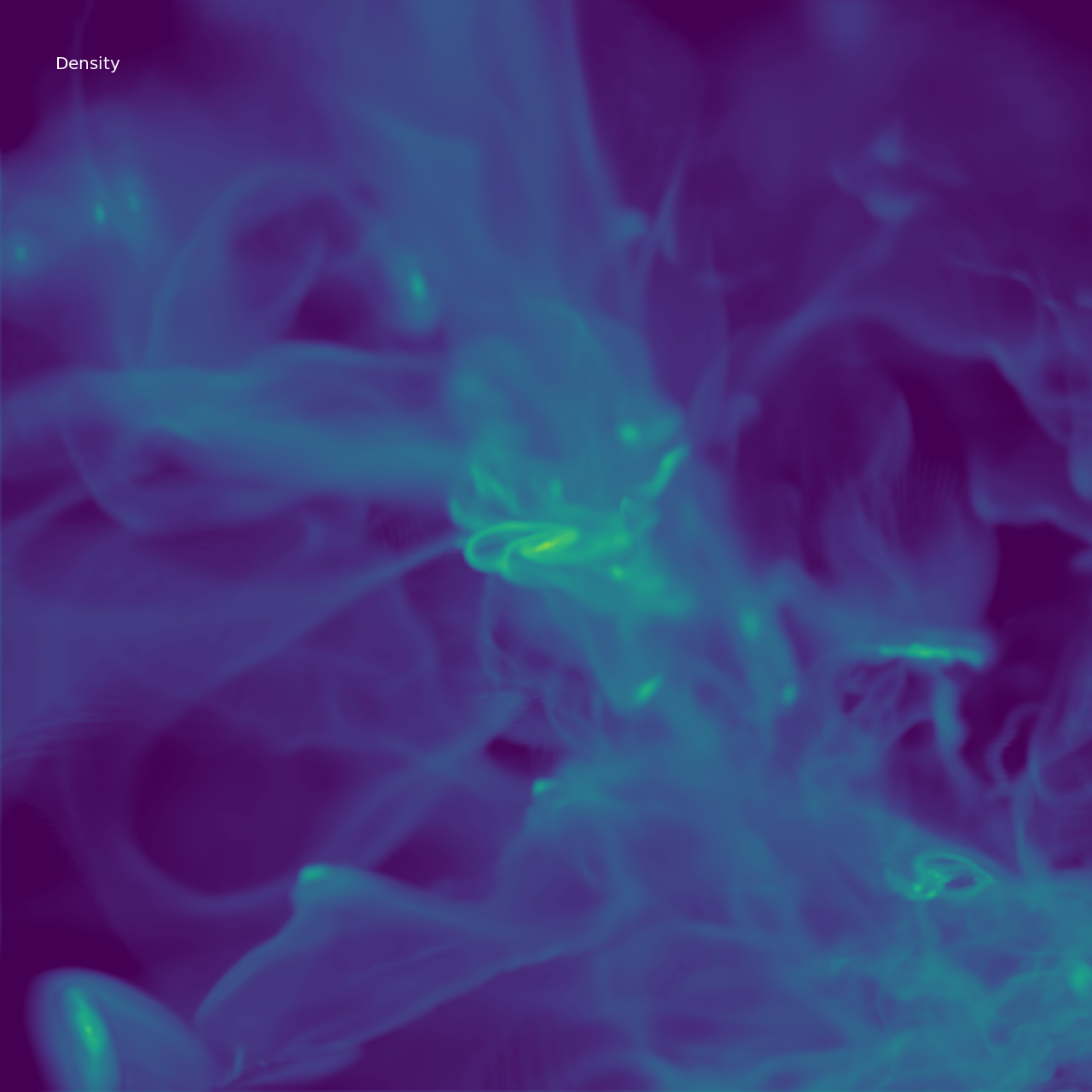
Cooling length refinment
Refining where
\( \Delta x > 2 \sqrt{\dfrac{P_\mathrm{th}}{\rho}}\times \dfrac{1}{\Lambda_\mathrm{net}},\)
(Rey+23)
- up to \(80\,\mathrm{pc}\)
- turned on at key moments
\(z=5.8\)
\(z=5.8(+2\,\mathrm{Myr})\)
\(20\,\mathrm{kpc}\)




Cooling length refinment


How much does it cost?
\(\times 3\)
\(\times 70\)!



Detailed modelling of the ISM and emission lines
By Corentin Cadiou
Detailed modelling of the ISM and emission lines
Framing the Big Picture of Galaxy Star Formation Quenching with JWST & Euclid
- 308



